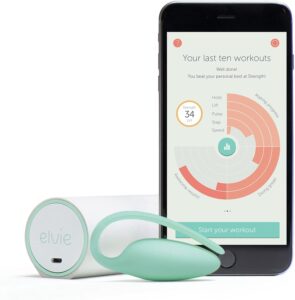Pelvic organ prolapse is when one or more of the organs in the pelvis slip down from their normal position and bulge into the vagina. It can be the womb (uterus), bowel, bladder or top of the vagina.
Symptoms:
-
There may be no symptoms noted but prolapse if found during a routine internal examination.
-
There might be a feeling of heaviness around your lower tummy and / or genitals.
-
There might be a dragging discomfort inside your vagina or a feeling like there’s something coming down into your vagina.
-
There might be a feeling of a bulge or you might see a bulge or lump in or coming out of your vagina.
-
There might be discomfort or numbness during sex.
-
Inability to retain tampons in position.
-
There might be problems peeing. You might feel that it is difficult to start to pee or fully empty your bladder.
-
You might notice that you ‘leak’ urine, particularly when you cough, sneeze, laugh or exercise (See also section on incontinence).
-
Difficulty emptying the bowels with associated straining.
Causes:
-
Long / strenuous, vaginal delivery.
-
Giving birth to a large baby.
-
Being over the age of 35 increases your chances of prolapse occurring.
-
Being overweight.
-
Being a long-term smoker (associated with coughing a lot).
-
Undertaking strenuous activities on a regular basis, such as heavy lifting or manual work.
-
Frequent constipation.
Here is what the evidence says about the treatment options:
Exercise guidance:
Weight management – Being overweight or obese is associated with progression of pelvic organ prolapse. THIS study however, found that weight loss did not appear to be significantly associated with regression of the prolapse, suggesting that the weight loss is needed prior to the event (pre-natal).
Pelvic Floor Exercises – evidence suggests that pelvic floor exercises can be quite effective when treating pelvic prolapse symptoms. The largest most rigorous trial to date suggests that six months of supervised exercise has many benefits in terms of symptoms and changes in the anatomy.
Pilates – evidence does support the use of Pilates-based exercise during & after pregnancy for the treatment of many conditions including pelvic floor strength. Evidence has also shown that Pilates can also have a positive effect on the birth and the outcome following the birth. This study compared Pilates with standard pelvic floor exercises and concluded that the Pilates exercise program was as effective as conventional pelvic floor exercises in speeding up continence recovery and it also achieved a higher rate of fully continent patients in the short-term.
Have a look at our Top 5 online Pilates options here.
Yoga – Yoga is another exercise option because it is low impact and teaches slow, controlled movements and breathing techniques which can be really useful when recovering from any pelvic floor damage. There are lots of Online Yoga programmes available, have a look at our Top 5 here (and why we love them)! You can also read our blog on how yoga can help in other ways.

Exercising with a prolapse – Having a prolapse shouldn’t stop you getting back exercising following your pregnancy. There are things that you can do which can help you manage your symptoms and exercise safely.
Follow these guideline that Jess at ‘The mama Physio‘ has created for prolapse sufferers:
- Always include your pelvic floor exercises at the start of any exercise that you do.
- Try to exercise more in a horizontal position or with a narrow base of support (feet closer together). Exercises in 4 point kneeling, on your back, side or front create much less strain on the pelvic floor muscles.
- High intensity workouts will be better than high impact workouts. Stick to classes like spin, swimming, cross trainer or at home HIIT classes which as described as ‘low impact’.
- Add ‘The Knack’. The knack is a timed, strong contraction of the pelvic floor with any activity. Jess recommends adding the contraction to any strenuous activity like lifting weights or weighted squats.
- Lift from one side. Instead of doing both arms at the same time, just do one. This reduces the amount of weight going through your pelvic floor and you can concentrate on the weight just going through the one side.
- Use a pessary. Jess is a big fan of Pessaries. She describes them as ‘The sports bra of the Pelvic Floor’. A Pessary will help to support the organs so that when you exercise, there is less tension / dragging on the ligaments that hold them up.
- Exhale with effort (breathe out when you lift / push / pull etc).
Things you can buy:
Biofeedback – This is an addition to pelvic floor exercises. Biofeedback therapy builds on strength training by incorporating the use of equipment to record or amplify activities of the body and feed the information back to the patients. It can make doing pelvic floor exercises a little more fun / interesting and gives you a target and feedback on how much improvement there has been. There is quite a lot of research into the effectiveness of biofeedback when it comes to conditions associated with a weak pelvic floor. THIS study concluded that, when comparing biofeedback to pelvic floor muscle training alone, the results were far superior using the feedback device.
You should speak to your women’s health specialist Physiotherapist about using biofeedback devices to check if it is the right option for you and the right time to begin use. You can then buy them online, THIS one has great reviews and is available on amazon.
Vaginal Cones – These are weighted toners which come in different sizes to help strengthen the pelvic floor muscles. They are designed to improve strength over a 12 week period, they’re easy to use and the ideal introduction to pelvic floor exercises. This study showed a better result when using biofeedback and toning cones, over just pelvic floor exercises on their own.
You can buy weighted cones / toners online HERE, they have excellent reviews. Always speak to your healthcare provider before using anything like this to check that it is the right course of treatment for you.
Doughnut cushions – a lot of studies have been carried out in order to check the effects of doughnut cushions on pressure relief. The studies are always in their favour, so if pain is your main issue then something like this might help to take some of the pressure off the affected area. Various types of cushions are on the market, have a look at our Top 5 pressure relief cushions HERE.

Other treatment options you might come across:
Pessaries – are another option with pelvic floor prolapse but the evidence is a little mixed when it comes to their use. One recent study reported uncertainty as to whether pessaries improve pelvic organ prolapse symptoms for women compared with no treatment or pelvic floor exercises alone. However, they concluded that pessaries, in addition to pelvic floor exercises, improved women’s pelvic organ prolapse symptoms and prolapse‐specific quality of life. This combination of treatment was also backed by this study from 2016.
Hormone therapy – There is little evidence available when it comes to the use of hormone therapy in pelvic organ prolapse. This study looked at the use of oestrogens for the prevention and management of pelvic organ prolapse and found limited evidence after assessing randomised controlled trials.
Really useful links that we think you’ll love:
- Here is a link to a really informative video that explains pelvic floor dysfunction and prolapse really well.
- There is a brilliant app called Squeezy. This app shows you exactly how to do your pelvic floor exercises and for how long, tailored to each individual.
- Here is the link to ‘The Mama Physios’ page which has lots of useful prolapse info on it.
What symptoms to out watch for:
If you have any of the following symptoms then go to your nearest accident and emergency department immediately:
-
Severe low back pain.
-
Pain, numbness, or weakness in one or both legs that causes you to stumble or have trouble getting up from a chair.
-
Loss of or altered sensations in your legs, buttocks, inner thighs, feet or areas that you sit on when in a chair (including genitals / anus) that is severe or gets worse and worse.
-
Recent problem with bladder or bowel function, such as trouble eliminating urine or waste (retention) or trouble holding it (incontinence).
-
Sexual dysfunction that has come on suddenly.





